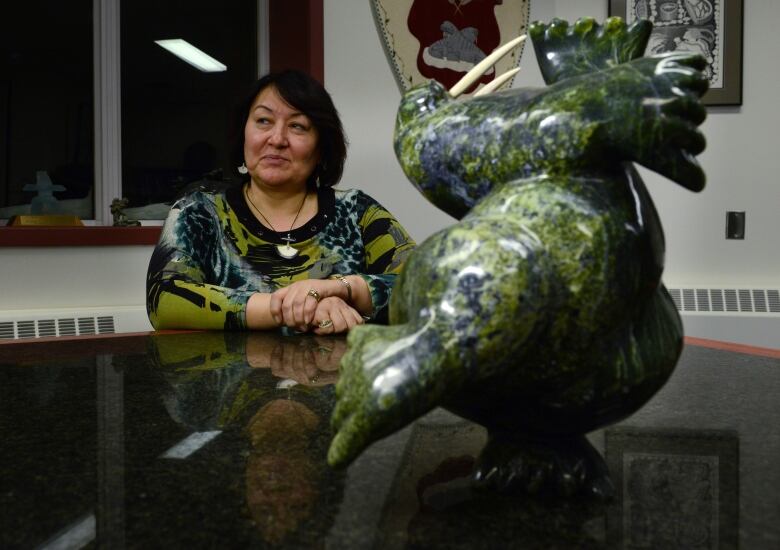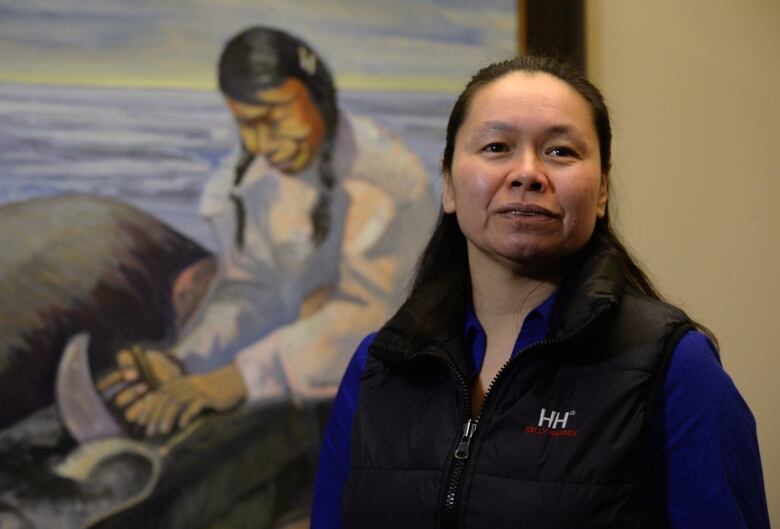Nutrition North food subsidy program: What went wrong
Food has always cost more in the North, but northerners have long said Nutrition North isn't helping
For years, northerners have complained aboutNutrition North to anyone who would listen, grumbling that the$60-million annual federal food subsidy was doing little to easetheir staggering grocery costs.
No one, it seemed, took much notice.
That all changed last month, when auditor general MichaelFerguson revealed that the program's overseers are largely in thedark about whether the subsidy is doing anything for the people whoneed it the most.
"The program is not working," Cathy Towtongie, president ofNunavut Tunngavik Inc., which administers the Nunavut land claim,said in a recent interview at her Iqaluit office.
"For the large majority of Inuit that don't know how to accessit ... it's not working. And accountability and the transparency ofCanadian taxpayer dollars ... the auditor general agreed with usthat there is no transparency and no accountability.
"And we have been saying that for a number of years now."
Retailers cashing in?
One of Ferguson's observations in particular struck a nerve withsome northerners: that some retailers are cashing in on the subsidy.
Aboriginal Affairs and Northern Development Canada told the auditteam that the subsidy sometimes exceeds the very shipping costs itis meant to defray a revelation that came as no surprise to some.

"In upper, High Arctic communities, the subsidy is higher thanthe freight cost. So they're making money like that."
Food has always cost more in the North, due to the expense ofshipping it in from other parts of Canada, the region's relativelysmall and dispersed population, and the distance from majortransportation hubs.
"In the south, food is shipped by road, and we just do not haveroads into our territory," former Iqaluit mayor Madeleine Redfernsaid in an interview.
"You have the cost of running a retail store the actual spaceand storage and having to pay employees higher wages. The power ratecosts have gone up several times in the last few years. So it isexpensive to run a business here."
Shift in subsidy
The federal government used to subsidize shipping costs throughthe old Food Mail program in an effort to make food more affordable.
First Air, an airline owned since 1990 by the Inuit people ofQuebec through Makivik Corp., had a contract with Canada Post todeliver groceries to Nunavut communities at set rates. That meantunder Food Mail, retailers had to rely on airlines chosen by CanadaPost to get the subsidized freight rate.
But in 2011, the Conservatives replaced Food Mail with NutritionNorth, which shifted the subsidy to retailers, who in turn wereexpected to pass it on by cutting food costs for consumers.
Ron Elliott, who used to represent a High Arctic riding inNunavut's legislature, said people are skeptical that businesses areactually passing on the full subsidy to customers.
"What you're doing is you're putting the subsidy in the hands ofthe businesses," Elliott said in a telephone interview from hishome in Arctic Bay.
"If you're in business to make a profit, are you going to bethat willing to have good will? My problem is, you can't really tella business what profit they should have, right? So if the market canbear something, usually that's what people charge."
Aboriginal Affairs has not required merchants to report theirprofit margins, which over time would indicate whether the fullsubsidy is being passed on. Ferguson's report said such a measurewould help quell skepticism about whether consumers are actuallygetting the full benefit of the subsidy.
The department now says that as of April 1, retailers will haveto provide information on their current and long-term profitmargins.
Eligibility unclear
Nutrition North gives retailers a subsidy based on the weight ofeligible foods shipped to eligible communities. But the auditorgeneral found Aboriginal Affairs did not choose eligible communitiesbased on need.
To highlight the problem, Ferguson's team pointed to two remotecommunities in northern Ontario, both about the same distance to thenearest town and lacking year-round road access. One is eligible fora subsidy of $1.60 a kilogram; the other only five cents a kilogram.

"Consequently, community eligibility is based on past usageinstead of current need," the report says.
"As a result, there may be other isolated northern communities,not benefiting from the subsidy, where access to affordable,nutritious food may be an issue."
Aboriginal Affairs told Ferguson's team it has looked atexpanding the full subsidy to around 50 fly-in northern communities,but doing so would increase the cost of the program by $7 million ayear.
Pork-barrel politics?
Nutrition North also lets retailers choose their own shippingmethod. That opened up the door for retailers to use other airlines,such as Canadian North, to ship products.
Canadian North is a subsidiary of the holding company Norterra,which is owned by the Inuvialuit of the Northwest Territoriesthrough the Inuvialuit Development Corp. The Inuit of Nunavut usedto own half of Norterra through Nunasi Corp., but earlier this yearthey sold their 50 per cent stake in the company.
Fred Schell, a former Nunavut politician who brought forward amotion in the legislature in May 2013 calling on Ferguson to auditNutrition North, accused Aglukkaq of pork-barrel politics.
"At that time, I mean it was half owned by the Inuit up here,right? Whereas the other one (First Air) was entirely owned there bythe Inuit in northern Quebec," Schell said in a telephone interviewfrom Cape Dorset.
"So that was her way of thinking, well, she's doing somethingfor them up north here."
Tweaking the program
Aglukkaq spokesman Ted Laking said Nutrition North isadministered in a way that helps lower costs by providingcompetition. "That is totally appropriate, and is meant to helplower costs to families for food," Laking wrote in an email.
Aboriginal Affairs, meanwhile, is tweaking the program inresponse to Ferguson's report.
"In the coming months, our government and the Nutrition NorthCanada Advisory Board will continue engaging northerners, retailersand suppliers on ideas to keep the program on a sustainable path," Andrea Richer, a spokeswoman for Aboriginal Affairs Minister BernardValcourt, said in an email.
"This process will help continue to improve this new and growingprogram. We will also continue working with the Nutrition Northadvisory board to ensure that northerners maintain a direct voice inthe program."
But Redfern, the former Iqaluit mayor, said the changes may notbe enough to fix Nunavut's much larger food security problem.
"While I understand and appreciate the Nutrition North programattempts to assist by subsidizing healthy food, clearly people don'thave enough money to be able to feed themselves."












_(720p).jpg)


 OFFICIAL HD MUSIC VIDEO.jpg)
.jpg)



























































































